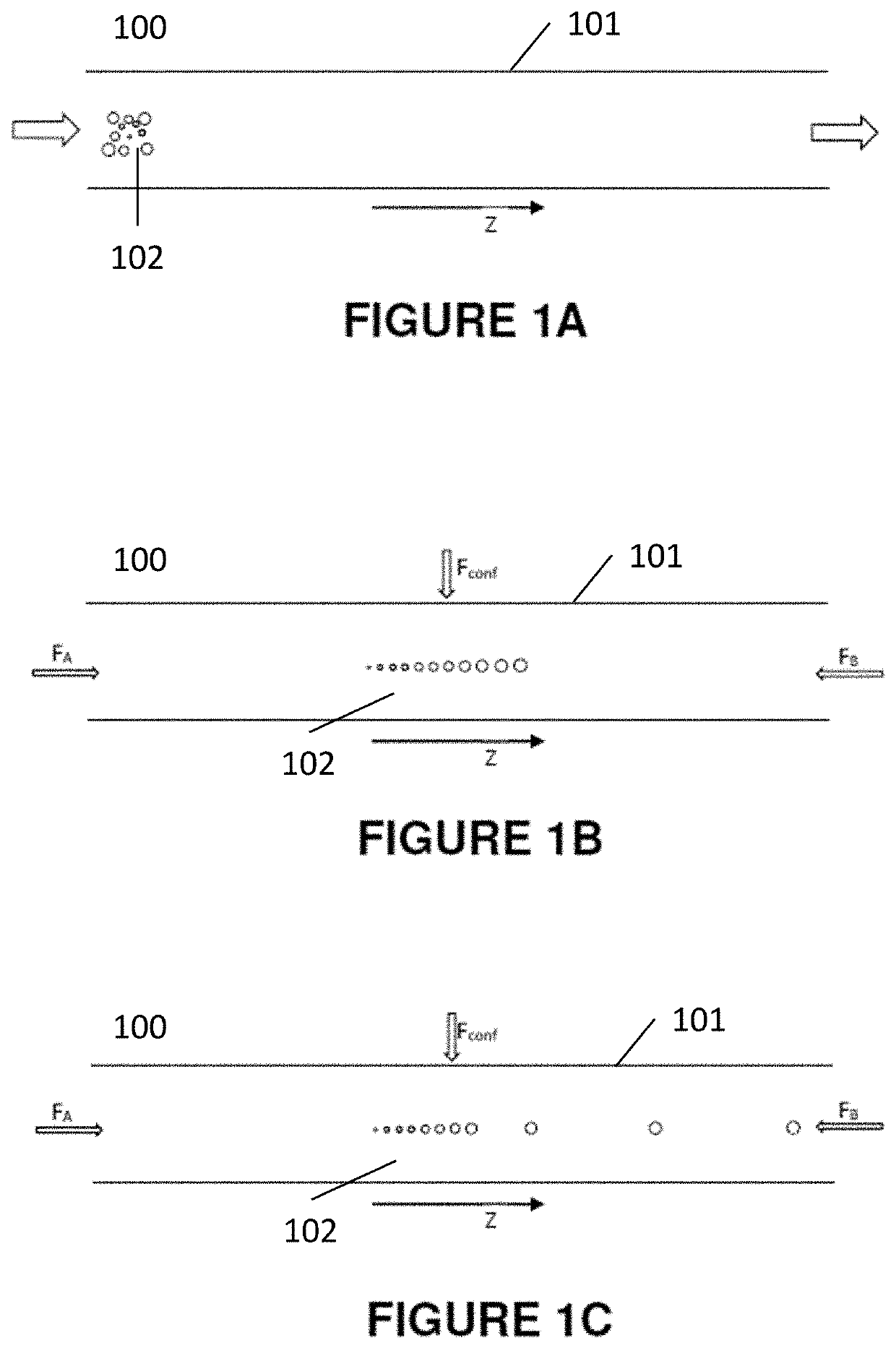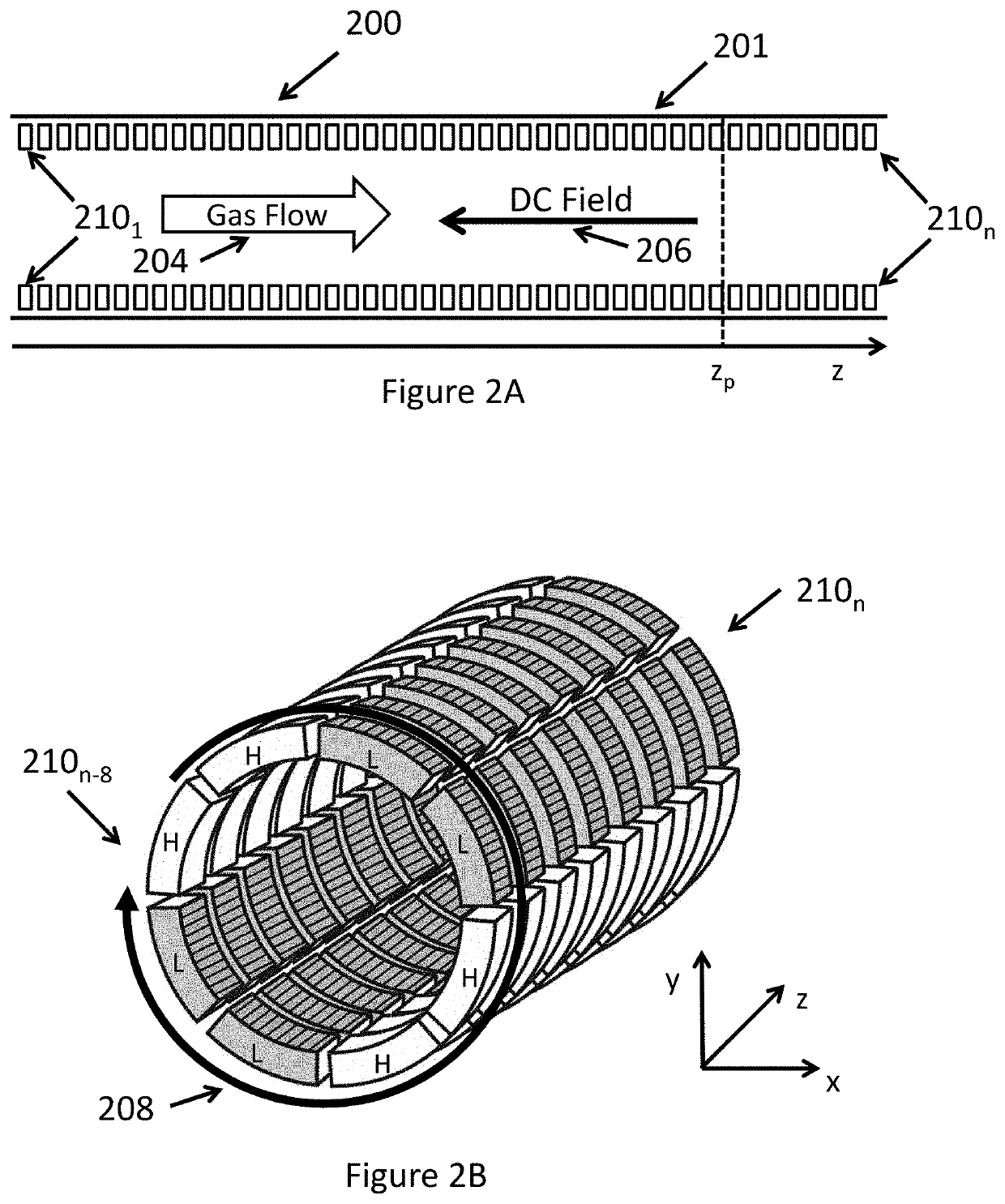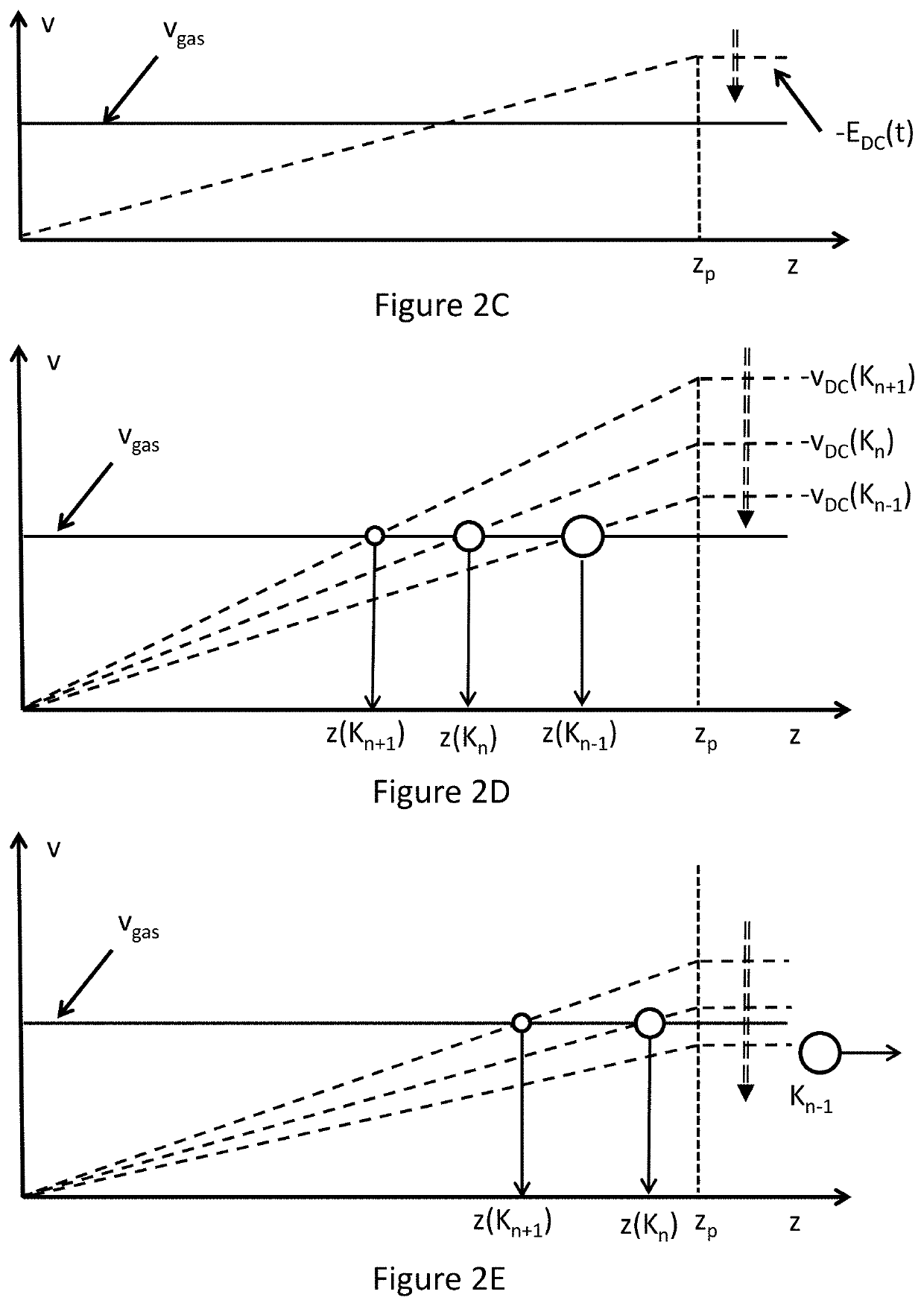Ion mobility separation system with rotating field confinement
a separation system and rotating field technology, applied in particle separator tube details, electron/ion optical arrangements, instruments, etc., can solve the problems of limited mobility resolution of the tims system and thus the scan time, ion loss, and limited ability of confinement systems
- Summary
- Abstract
- Description
- Claims
- Application Information
AI Technical Summary
Benefits of technology
Problems solved by technology
Method used
Image
Examples
Embodiment Construction
[0065]FIGS. 1A-1C show schematically three stages of operation for a general version of a trapped ion mobility separator 100 according the invention. The trapped ion mobility separator 100 includes an ion channel 101, which typically includes a structure that surrounds the ion path and includes electrodes for generating electric fields within the ion channel 101. As shown in FIG. 1A, ions 102 enter from one side of the channel 101, and will eventually travel to the opposite side of the channel, being temporarily trapped along the way at mobility dependent positions. The ions 102 are the molecular constituents of a sample material of interest, which have been ionized and introduced to the ion channel, typically from an ionization source of a known type, such as an electrospray or MALDI (matrix-assisted laser desorption ionization) type ion source or CI (chemical ionization) ion source. The ions 102 enter the channel 101 having arbitrary position and velocity, but will be separated by...
PUM
| Property | Measurement | Unit |
|---|---|---|
| pressure | aaaaa | aaaaa |
| pressure | aaaaa | aaaaa |
| pressures | aaaaa | aaaaa |
Abstract
Description
Claims
Application Information
 Login to View More
Login to View More - R&D
- Intellectual Property
- Life Sciences
- Materials
- Tech Scout
- Unparalleled Data Quality
- Higher Quality Content
- 60% Fewer Hallucinations
Browse by: Latest US Patents, China's latest patents, Technical Efficacy Thesaurus, Application Domain, Technology Topic, Popular Technical Reports.
© 2025 PatSnap. All rights reserved.Legal|Privacy policy|Modern Slavery Act Transparency Statement|Sitemap|About US| Contact US: help@patsnap.com



